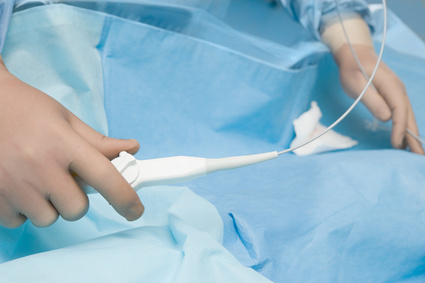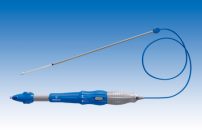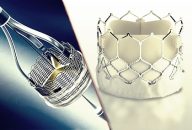The fundamental advantage offered by transcatheter aortic valve replacement (TAVR) has always been the fact that it is less invasive than surgical valve replacement. So far, most improvements for these devices have derived in less invasiveness (e.g., by improving the profile of the eluting system). However, there are also cases of “deployment” reduction during the…
Additional Benefit from Radial Artery Graft in Myocardial Revascularization Surgery
Used to different extents according to institution, surgeon, and historical time, the radial artery graft is yet to prove whether it can improve the outcomes of myocardial revascularization surgery when added to a single or bilateral internal thoracic artery graft. The ART (Arterial Revascularization Trial) was designed to compare survival after bilateral vs. single left internal…
The need for dialysis after TAVR increases mortality
Courtesy of Dr. Carlos Fava. Stage III or higher renal impairment is frequent before TAVR, and the need for new dialysis after the procedure may reach up to 20%. Within that percentage, 5% may require permanent dialysis, which increases mortality up to 9 times at one year. In that sense, factors leading to that complication have not…
Pacemaker Implantation After TAVI Raises Costs But Not the Incidence of Adverse Events
This new meta-analysis did not manage to prove whether permanent pacemaker implantation after transcatheter aortic valve replacement (TAVR) raises the rates of mortality, infarction, or stroke. Implantation could only be associated to a lesser recovery of ventricular function after the procedure, something that had already been observed in previous studies. Patients who required a pacemaker undoubtedly…
“Ad Hoc” PCI during TAVR: No Impact on Safety or Long Term Outcomes
According to a recent study published in Circulation Cardiovascular Interventions, screening for coronary artery disease (CAD) with an invasive coronary angiography (as part of the protocol prior TAVR) and performing PCI and TAVR in the same session, has no impact on periprocedural safety or on long term outcomes. Study outcomes offer new hope, especially as regards using TAVR…
Positive Outcomes of CoreValve Evolut in Large Population
The Evolut R, as well as its predecessor the CoreValve, is a self-expandable valve, supra-annular, made of porcine pericardium in a nitinol frame. Amongst its improvements, it has a better profile and the option to resheath. This makes it fully repositionable and even recapturable. We only needed to confirm these technical advantages would translate into clinical…
Bleeding and Mortality in Transcatheter Aortic Valve Replacement
Transcatheter aortic valve replacement (TAVR) is much less invasive than surgical replacement. This is associated with a substantial reduction in bleeding events (up to 60% less). However, clinically relevant bleeding is still present in one every four patients who undergo TAVR, which is associated with morbidity and mortality. Cases of bleeding are not uniform: they may…
Lotus vs Sapien 3, different mechanisms with similar results
The new generation devices for transfemoral transcatheter aortic valve replacement have been optimized to improve valve position and reduce residual aortic regurgitation. This study compared 30 day, 12 month and 24 month outcomes of the repositionable, Lotus valve, with controlled mechanical expansion, and the balloon-expandable valve Edwards Sapien 3. Primary end point was all cause mortality…
How can we classify aortic stenosis in patients who underwent TAVR?
Courtesy of Dr. Carlos Fava. Aortic stenosis can present different hemodynamic patterns, such as low flow and low gradient with reduced or preserved ventricular function. However, evidence on the evolution of different hemodynamic patterns after transcatheter aortic valve replacement (TAVR) is limited. This study consisted in a retrospective analysis of 368 patients who underwent TAVR. The population was divided in…
Increasing operator experience improves TAVR outcomes
The introduction of transcatheter aortic valve replacement (TAVR) into clinical practice in the United States has been a tightly controlled process aimed at optimizing patient outcomes and minimizing the learning curve. Many strategies have been used to reach a rational dispersion for this new technology, including choosing sites with enough volume, and adequate operator training…









